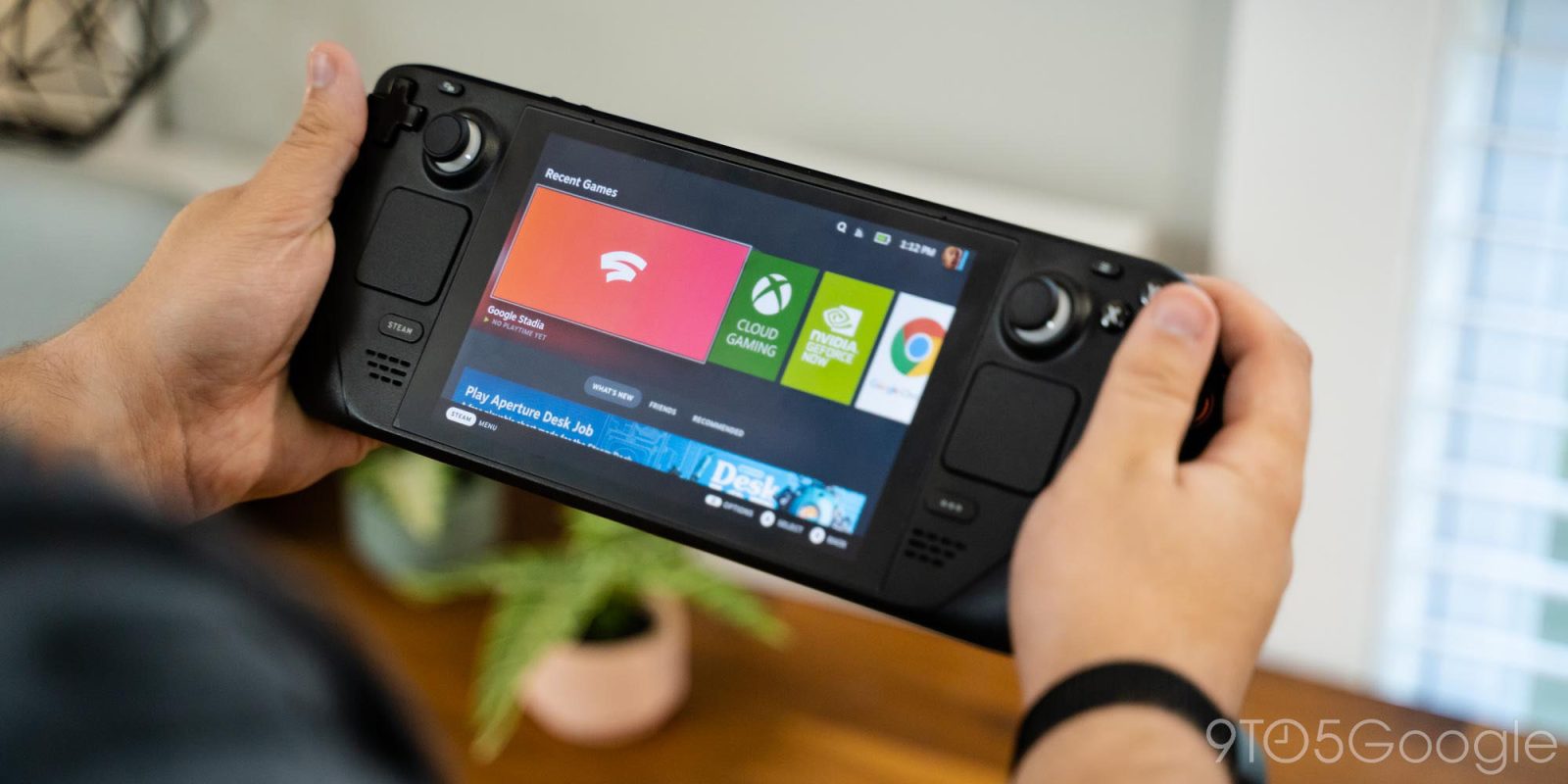
Google Stadia may not have been the most popular way to play games in the past few years, but for those it did service, it reignited a flame for gaming because it did so in a way that nothing else really could. After three years of making Stadia a core part of how I play games, its shutdown leaves a void, but one that the Steam Deck has been helping me to fill.
The Steam Deck gives me most of the same flexibility Stadia did
Google Stadia piqued my interest from day one not because it was just another Google product, but because it had the potential to truly change how I played games. And oh boy, did it. Once Stadia finally started adding games I actually wanted to play, I spent hours streaming games between my TV, PC, and my phone. Previously, I’d always been locked down to playing solely on my desktop computer or my Nintendo Switch, but suddenly I had a way to play the same game with the same save from whatever device I wanted.
That’s perhaps the biggest thing that the Steam Deck has solved for me. Over the past few months, I’ve found myself playing games more because the Deck can do the same things that Stadia did, just in a different, slightly less seamless way.
In many cases, I still end up playing a lot of games on my desktop PC. It’s my workhorse and the best experience I can get for gaming in my home right now. But the Steam Deck extends that out for me, so I can play many of the same games while on the couch, in bed, or at someone else’s house. It also proved to be an excellent way to extend that experience up to my TV thanks to the Deck’s easy docking ability.
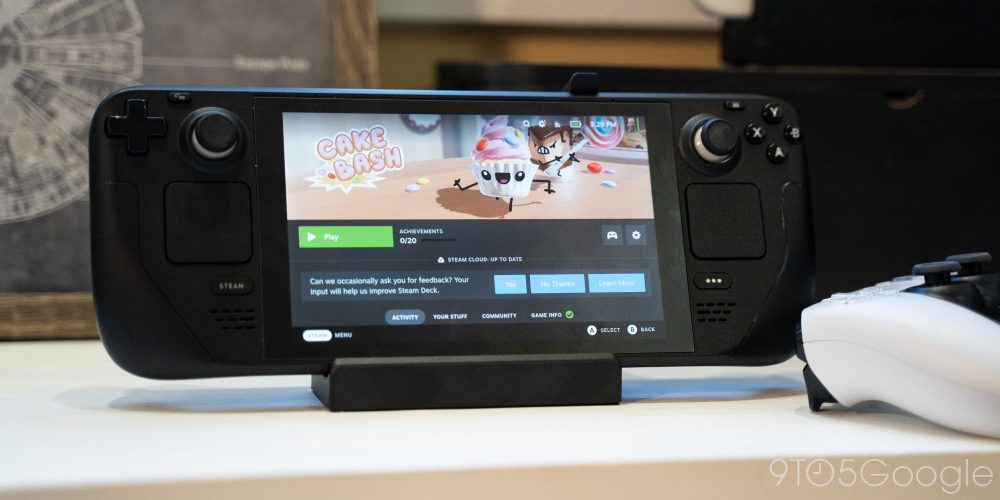
Most of my Stadia library works on the Steam Deck
What also helped quite a bit in the transition is that most of my Stadia library works on Steam Deck. I’ve been using some of my Stadia refunds to re-purchase my the games I actually care about on Steam.
The Steam Deck runs on top of a customized version of Linux and many games are run through Proton to be compatible. For my personal Stadia library, that’s been just fine. Single-player games like Orcs Must Die 3 and Journey to the Savage Planet – some of the few fruits of Stadia’s studios – work wonderfully on the Deck in handheld mode, arguably better than playing with a phone and controller. The only game I couldn’t pull over was Marvel’s Avengers, which is unplayable on the Deck natively, but more on that later.
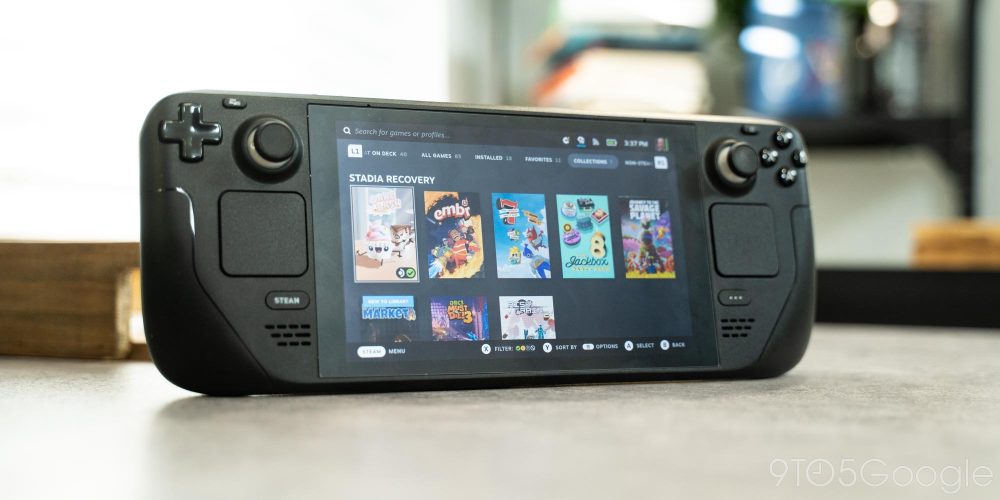
During its last year, I actually used Stadia for party games more than anything else, and the Steam Deck fills that hole quite well. Jackbox and Cake Bash, two games I was using Stadia for quite a bit, run great in docked mode on the Steam Deck. Of course, the latter required that I buy a bunch of new controllers since Google still hasn’t unlocked Bluetooth support.
Some of Stadia’s stronger fans may be quick to point out that the Steam Deck isn’t as powerful as the hardware that backed Stadia, but I’ve got to be honest, I’m enjoying the look of games even more on the Steam Deck. As great as Stadia could be when you look at game quality, it varied wildly from title to title, especially in the last year of the service. Some games frankly looked like garbage – Jedi: Fallen Order and Ark: Survival Evolved both come to mind – despite the hardware behind the scenes, and it was completely out of the user’s control. It was really just up to how much work was put into optimizing games for Google’s aging hardware. I’m perfectly happy throwing away 4K streaming for a consistent experience at just under 1080p.
I can have the best of both worlds on the Steam Deck
The best thing about the Steam Deck for someone moving on from Stadia is that it acts as a best of both worlds situation. You can download games and play them natively, or use a cloud service! You can also stream locally from another PC on your network if you happen to have one.
It’s not all that difficult to set up Xbox Game Pass or GeForce Now on the Steam Deck, and those open the Deck to even more games.
For instance, Marvel’s Avengers is one of the few games I have on Stadia that isn’t playable on the Steam Deck natively, but I can play it through GeForce Now since I’ve purchased it on Steam. Streaming the game works pretty well, though the low resolution of the display inherently limits the quality of these streaming services to an extent.
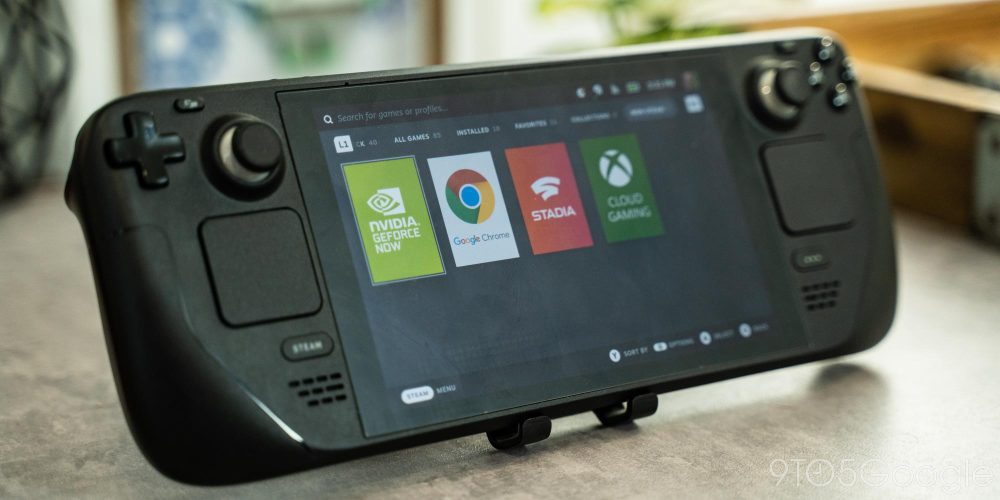
The only thing I’ve noticed about cloud gaming on the Steam Deck is that it’s more demanding of a solid network than a smartphone. While playing Stadia on my Galaxy Z Fold or Pixel phones, I’ve had fewer issues with lag compared to playing on the Deck, but my recent upgrade to the Nest Wifi Pro has fixed those issues. Just something worth keeping in mind if you intend to pick up the Deck as a cloud gaming machine.
The Steam Deck doesn’t replace Stadia, but it solves some of its problems
But of course, there’s plenty that the Steam Deck can’t replace from Stadia.
First and foremost there is the matter of downloads and waiting for them to finish. I’m constantly reminded why I loved Stadia so much every time I sit down to play on the Steam Deck and notice major updates going on. One of the games I was most excited to play on the Deck, Spider-Man Remastered, forced me through a 14GB update that took the better part of an hour to download and install. And I’ve been reminded of that with every update to Space Crew, Spider-Man: Miles Morales, and others. Updates will sometimes install in the background, but I’ve not found it particularly reliable.
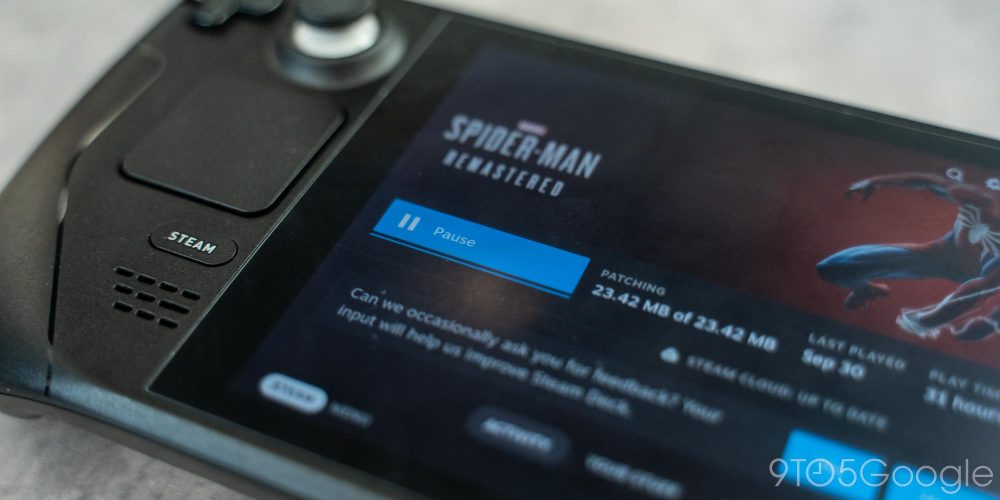
Moving to the Steam Deck also means dealing with storage limitations again, something I was so glad to not worry about on Stadia. My Stadia library had over 100 games that I’d either bought or claimed on Pro, all ready to go at once. With the Steam Deck, I have to weigh out which games I want to have downloaded, and which ones I want to access through the cloud.
The Steam Deck also can’t replicate the idea of future-proofing that Stadia tantalized us all with. Google shared (but never delivered on) a vision of having a cloud gaming platform that upgraded behind the scenes, ready to continue on with games through generations without needing to buy a new piece of hardware every few years.
But at the same time, those losses are outweighed by some of the benefits I’ve picked up. Being able to play games offline is something I’ve come to greatly appreciate, especially as travel has opened back up.
The ability to put games on standby is also something I forgot how much I missed from the Nintendo Switch. Being able to hit pause and then put the Steam Deck to sleep, only to come back hours or days later to resume the game from the same spot is one of the few things I really wanted on Stadia. Countless times I would skip a gaming session just because I knew I wouldn’t be able to get to my next save point in the few minutes I had to play; it’s a big part of the reason it took me ages to finally finish Jedi: Fallen Order on Stadia. I’m able to play games on the Steam Deck that I never would have finished on Stadia, or my PC for that matter, like Horizon Zero Dawn which I’ve finally been getting around to lately.
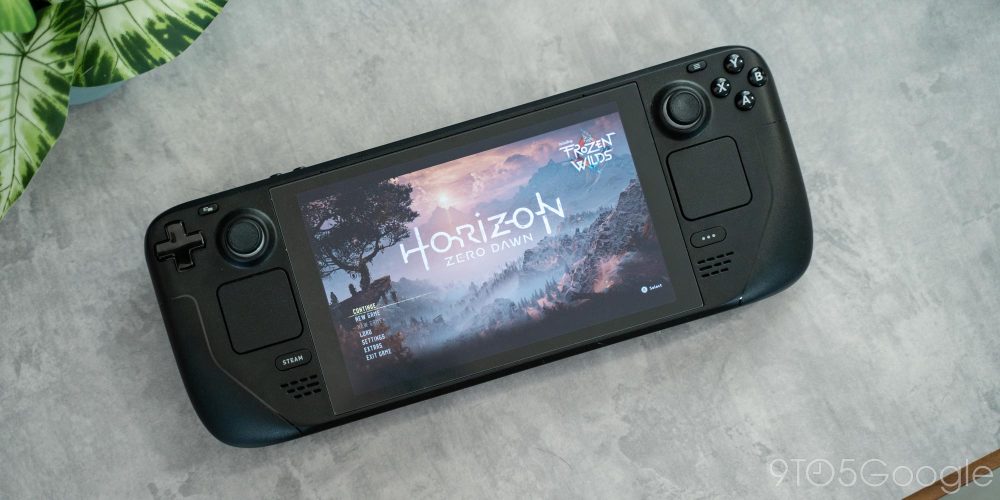
Perhaps the biggest thing that the Steam Deck solves that was annoying me about Stadia is the uncertainty around new games. In its final months before we knew of its demise, the unfortunate truth about Stadia was that its future was nothing but uncertainty.
Related: Google Stadia was drowning in a sea of ambiguity
New games, sequels, and even expansions weren’t a guarantee for Google’s platform, and that made it really hard to enjoy my time there. The things I wanted to play most just weren’t there, and there was no guarantee they would ever arrive. With the Steam Deck, I can be confident that, in one way or another, the games I want to play should likely eventually become available.
And that’s not to mention the countless games that are available to me now that my preferred platform isn’t Stadia. As much as I loved playing on Google’s platform and thank it for introducing me to a bunch of games that have since become favorites like Risk of Rain 2 and Orcs Must Die 3, the disadvantages of using Stadia as my main place for playing games piled up quickly.
I’ll miss Stadia going forward, but in my personal search for its replacement, the Steam Deck has played the biggest role in filling that void, with the help of GeForce Now and Xbox Game Pass to fill the few gaps it has.
More on Stadia:
- Searching for Stadia: A prelude, or remembering what was lost
- Searching for Stadia: Shadow is an entirely different path to cloud gaming, for better or worse
- Searching for Stadia: GeForce Now is the king of quality
FTC: We use income earning auto affiliate links. More.





Comments